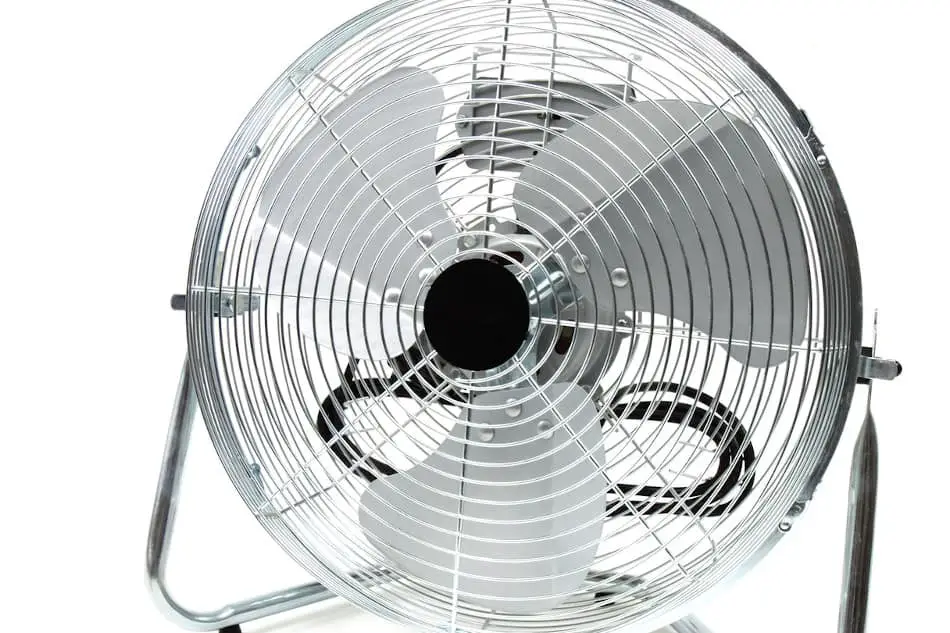The airbrush can be a vital tool when it comes to creating the perfect artwork. However, it can be risky to your health if ventilation is not adequate…
Many in the airbrush community want to know if they need ventilation in order to use their airbrush. But if you spend some time browsing the internet, your going to hear a multitude of different opinions on this topic, as well as horror stories that will make you feel as if you’ll need a hazmat suit before you can use your airbrush…
Haha, under most circumstances you won’t need a hazmat suit…
However ventilation is a very important part of airbrushing. But the amount of venitlation you require will depend heavily on a few different factors.
- The toxicity of the paint being used (Solvent based paint is considered toxic, while water based paint is commonly considered non-toxic)
- The amount of overspray in the air
- The size of the space your working in
We will discuss each of the factors in detail shortly. But to quickly shed light on this question:
Do you need ventilation for airbrush work?
Simply put, Yes (to a degree). Obviously the better your able to ventilate a room when using an airbrush the safer you’ll be. But that doesn’t mean you must have every window in the house open, and 10 different fans running…
Using a water based airbrush paint, you can get away with minimal ventilation, assuming you are wearing an approved respirator. But when working with solvent based airbrush paint, extensive ventilation is very important, along with the use of a proper respirator.
Factors That Determine Ventilation Requirements
As discussed above there are 3 major factors to be considered when it comes to deciding how much to ventilate your workspace.
- Paint Toxicity (Fumes)
- Overspray
- Size Of Workspace
But before we dive in, I’d like to bring to your attention exactly why ventilation is important when using an airbrush:
As you likely know, there are 2 major toxins (so to say) that you need to look out for when using an airbrush. The first is the overspray produced when paint is atomized, the second are the fumes given off by the paint.
The whole reasoning behind ventilating the workspace to which you airbrush in, is to minimize / reduce the amount of overspray and fumes in the air. Without ventilation, you will have a surplus of these bad toxins which can be very harmful to your health.
Granted the toxicity of the paint can play a large part when it comes to the fumes given off, but all paint run through an airbrush will be atomized and produce overspray. Its this overspray you need to be aware of when working with non-toxic paints…
Paint Toxicity (Fumes)

Paint toxicity can be looked at as a spectrum. On one side you have Very-toxic paints, These are your urethanes, lacquers, enamels and so forth. Virtually any paint type that is considered solvent / oil based is on the side of toxic.
On the other side of the spectrum you have Non-toxic paints, These are your water based paints such as, acrylics and Inks.
Now in terms of ventilation, how does this impact ventilation requirements for an airbrush?
Well, of course water-based paints, given their non-toxic label aren’t going to give off much in terms of fumes, meaning the toxicity level of water-based paints are quite minimal from a scent standpoint.
But on the other side of the spectrum, solvent based paints are known to give off a plethora of toxic fumes…
Based on this, you should be able to assess the level of ventilation necessary for your needs. But as an example, I’ll paint you a mental picture of the ventilation setup I use when airbrushing…
Me personally, I airbrush in the unfinished portion of my basement and I rarely open a window. Nonetheless I typically wear a respirator, and the space I work in is large enough to dissipate the overspray to the point I barely notice it, plus I utilize methods to minimize overspray in my workspace.
But keep in mind, I only work this way because I use a “Non-toxic” Water-based acrylic paint.
On the flip side, if I were to use solvent based paints, I would no doubt have a window open, and my respirator on at all times. As well, i’d likely be using a spray booth. But then again, that’s assuming I was working in my house, to which I wouldn’t be.
I prefer to use solvent based paints in my garage rather then in my house. I rather not risk the smell sticking to items in the room.
Overspray (Micro Paint Particles)
The next factor to consider is the overspray given off…
Overspray is going to be had no matter the paint type your using. Overspray is just a part of airbrushing. Granted there are methods to reduce overspray to the point its almost non-existent. But your always going to have trace amounts of overspray lurking in the air any time paint is atomized.
Now of course ventilating your work space isn’t going to reduce the amount of overspray given off, but it will reduce the concentrate within the room. That is, assuming your work space has adequate air flow in and out. Or your utilizing a spray booth.
However, it’s important to note, under most circumstances an airbrush produces very little overspray. So in relation to overspray, you can get away with minor ventilation. Assuming your wearing a certified respirator, and working with non-toxic paints.
Size Of Workspace
Let me begin with 2 different workspace cenarios:
- The first is of a guy who is going to be airbrushing in a room that is no larger than 100 square feet.
- The Second is of a guy who will be airbrushing in a shop that is over 2000 square feet.
Let’s assume in both these scenarios that each man is not allowed any ventilation as they airbrush, and they are airbrushing the exact same project and paint. Who do you thing would be less exposed to the fumes and overspray given off?
Yes, the guy working in the 2000+ square foot shop.
This is because the added space allows for better dissipation of the fumes and overspray, when compared to the 100 square foot room.
So what does this mean?
The larger the workspace you have to airbrush, the less concentrated the fumes and overspray will be, Assuming ventilation is not an option.
But what happens if you now allow the ability to ventilate?
The man in the scenario above working in the 100 square foot room will be able to reduce the concentrate of fumes and overspray down near to the man working in the 2000 square foot shop, likely surpassing him…
Take away:
The larger your work space is, the easier it will be to get away with minor ventilation.
For example, I airbrush in the unfinished portion of my basement with very minimal ventilation.
But the biggest reason im able to do so is because of the large space for the fumes and overspray to dissipate. Along with the paint type I airbrush with (Water based acrylic airbrush paint). Its non-toxic, and gives off little to no fumes… And given the size of the room I barely even notice the fumes & overspray.
Nonetheless, I still do my best to wear my respirator.
Alternative Ventilation Options
If your gonna be airbrushing in a space where ventilation is going to be difficult. I suggest you avoid using any solvent based paints, as they can be much more harmful to your health. Stick with the water-based paints.
As well, do be sure to wear a qualified respirator, and possibly use a spray booth as well.
Spray Booth
A spray booth, otherwise known as a paint booth, is one of the best options to date for filtering and managing the fumes and overspray given off if you have limited ventilation options.
A spray booth works similarly to a vacuum, by creating an air stream that pulls air from one area to another using tubing, fans, and filters. A spray booth is designed specifically to filter the fumes and overspray out of the air, or at least move it to a location where it can dissipate easier (Outside).
Now, of course the quality of the spray booth will have a large impact on how well it filters the particulates out of the air.
If you decide to go with a spray booth? I, along with many in the airbrush community recommend This One (on amazon)
Nonetheless, if your still on the fence as to whether or not you need a spray booth, I have written a post on the topic that dives deeper into the pros & cons of using an spray booth.
Conclusion
Of course it is ideal to airbrush in a ventilated area. But you can get away with airbrushing in a low ventilated area. It mainly comes down to the paint type your using, and the size of your workspace.
Under most circumstances, if your using non-toxic, water based airbrush paint you are just fine airbrushing in a moderate sized room, with minimal ventilation (an open door, or window). Now if your airbrushing solvent based paints, Its ideal you do so in a well ventilated area, and in a room free of valuable items (such as in a garage).
That being said, there are methods to go about filtering the air if your working in an area that doesn’t allow for good ventilation. Such as by using a spray booth.
But no matter the circumstances you should always be wearing a respirator when airbrushing. A simple web search, and you can find a multitude of cases where people thought they were okay not wearing respiratory protection and ended up with all sorts of health problems… Do your future self a favor and always were an approved respirator.
Anyway, I hope you were able to find some value here! If you have any further questions regarding the airbrush do be sure to take a look around the website. Airbrush Insider is dedicated to helping all in the airbrush community!
This is Colt signing off!
Check Out Some Of My Favorite Airbrush Equipment:

